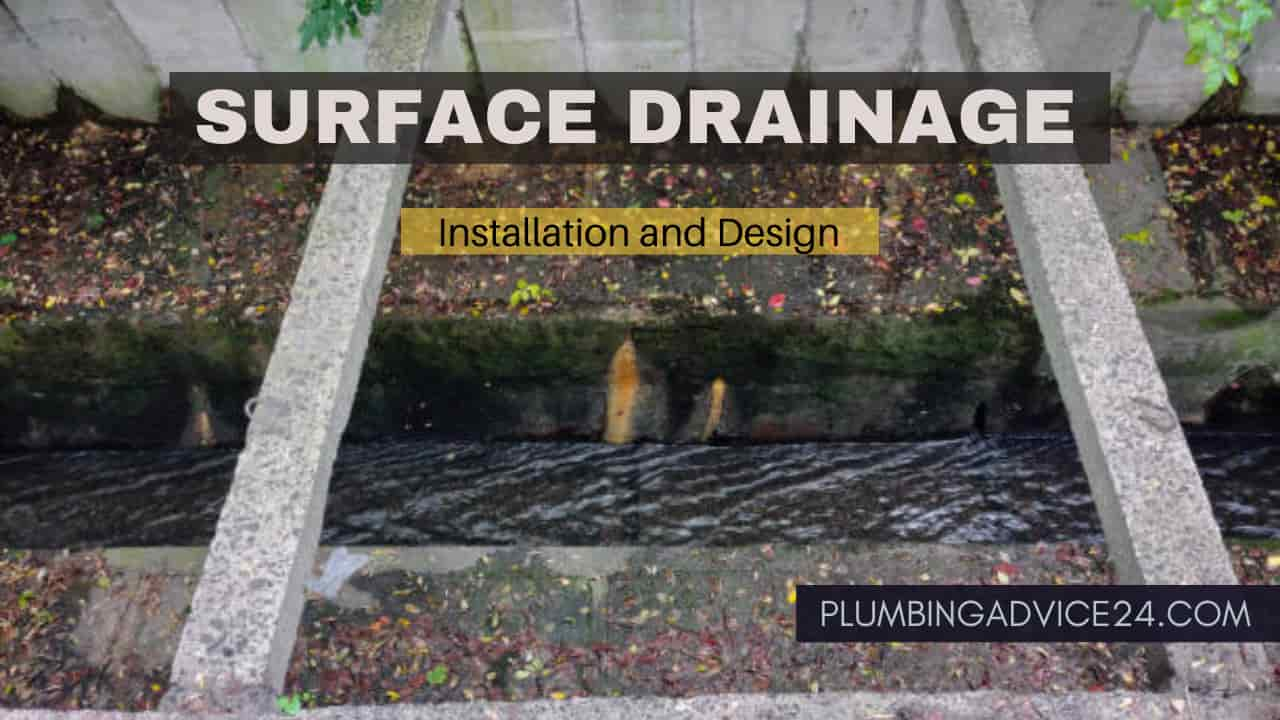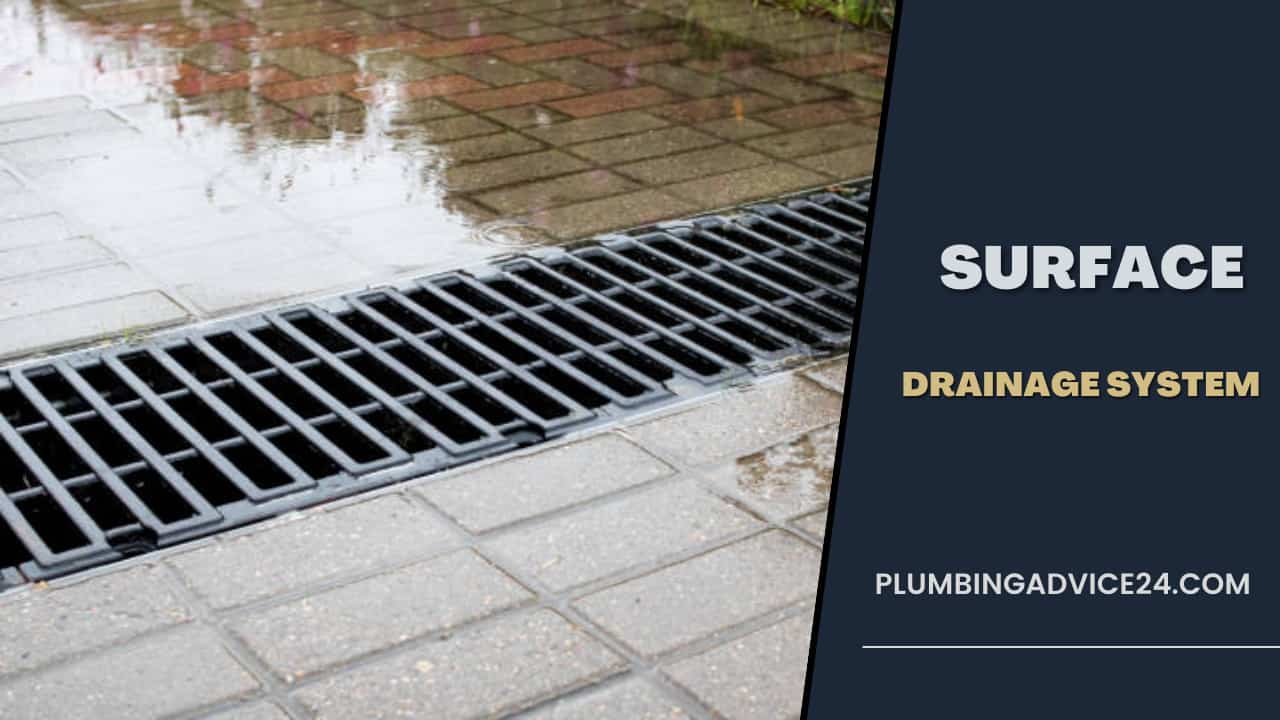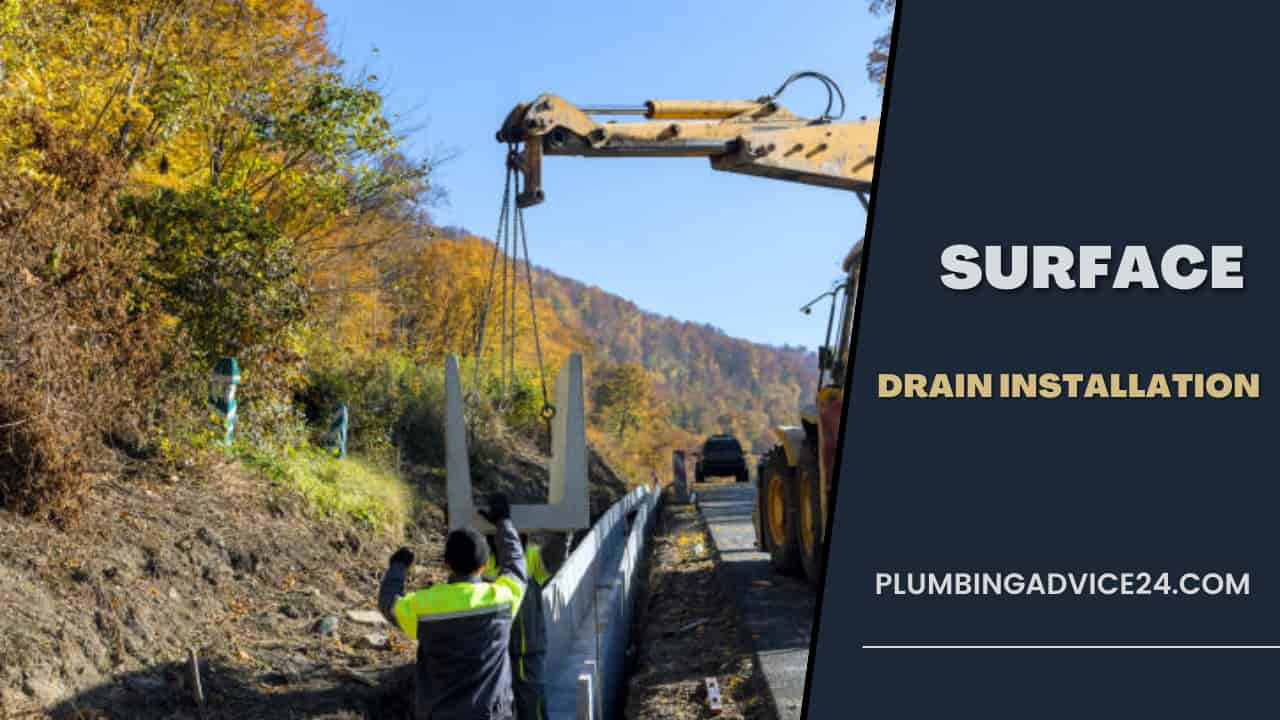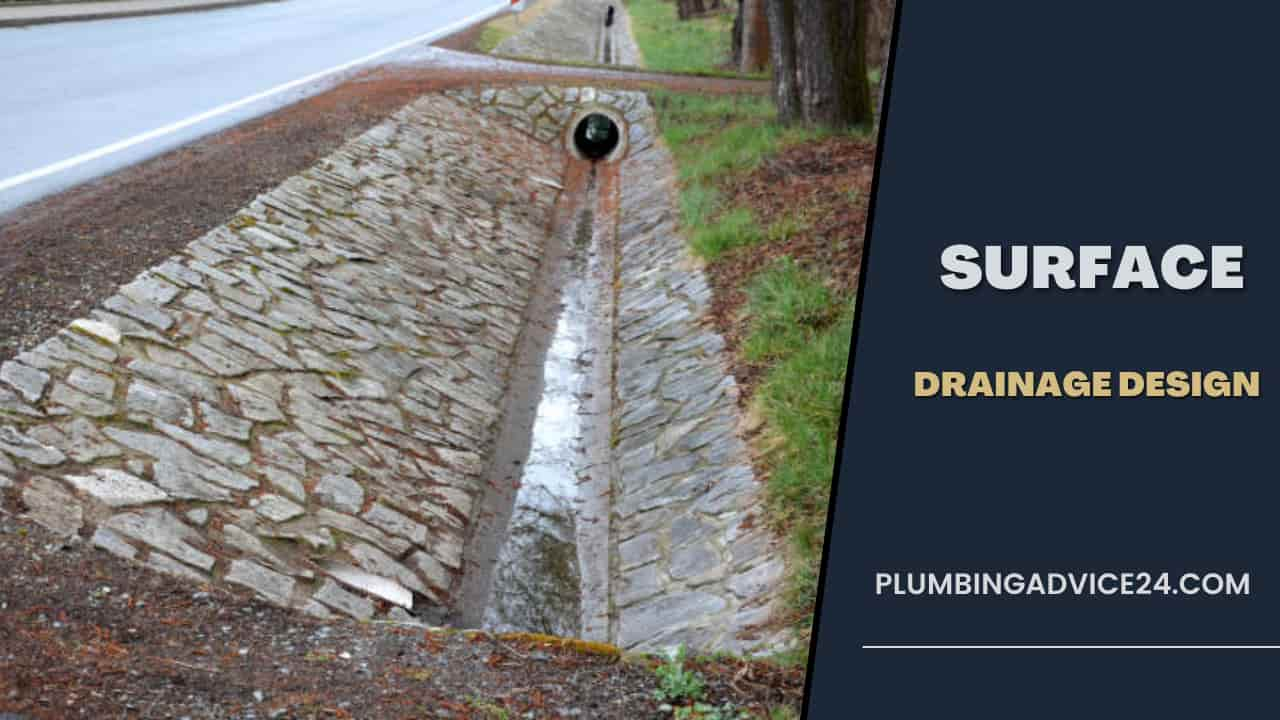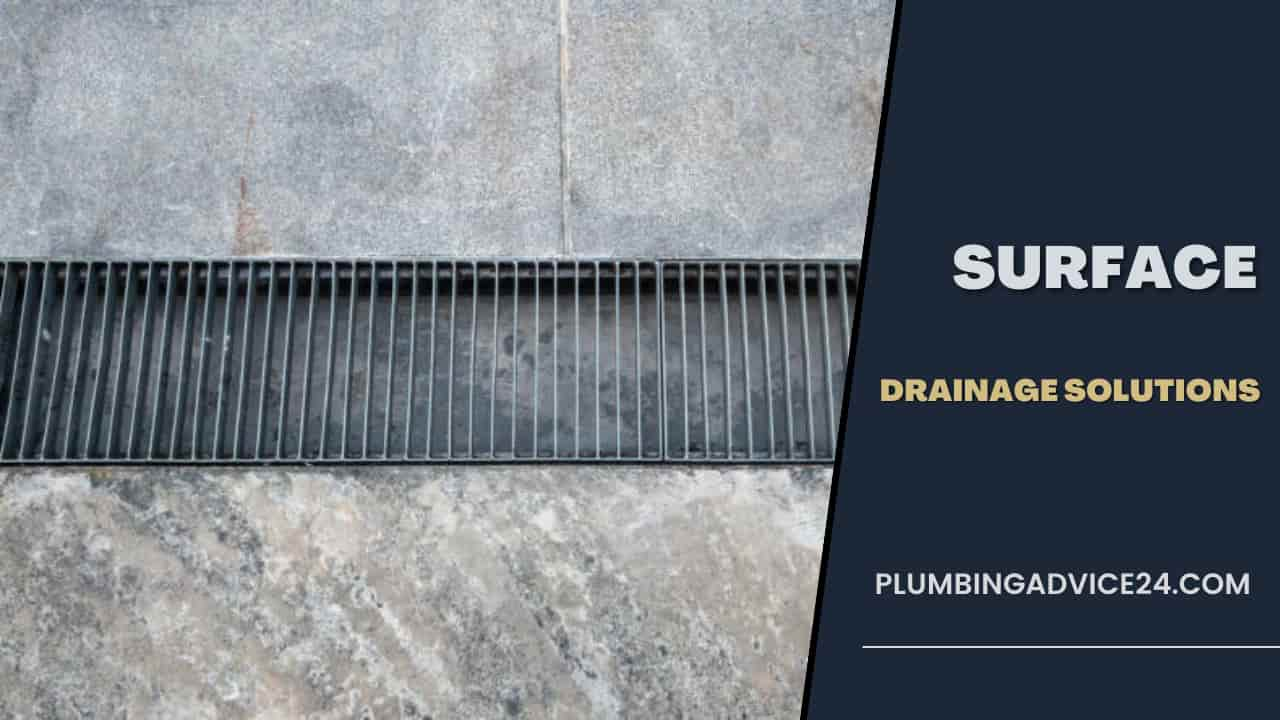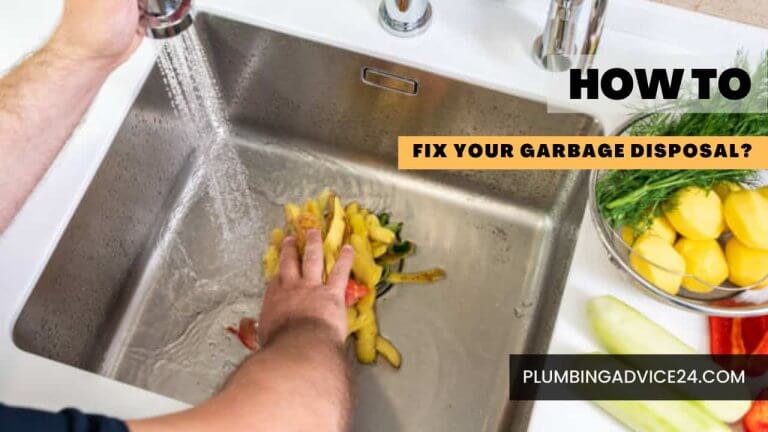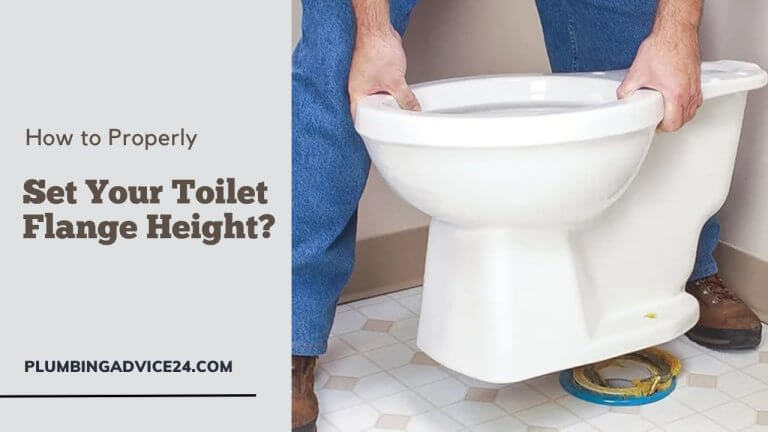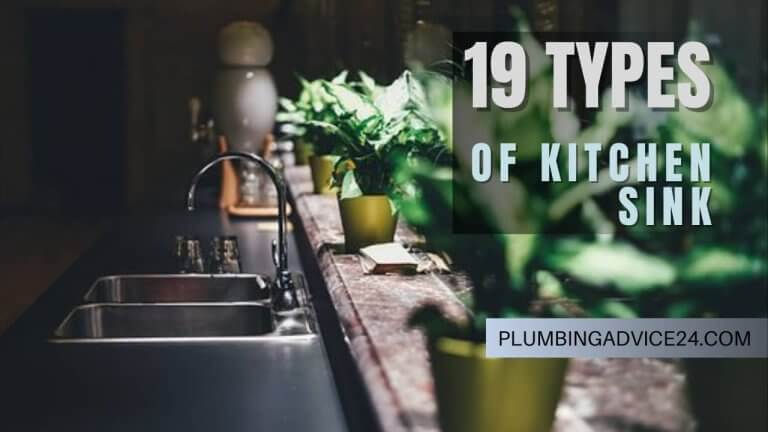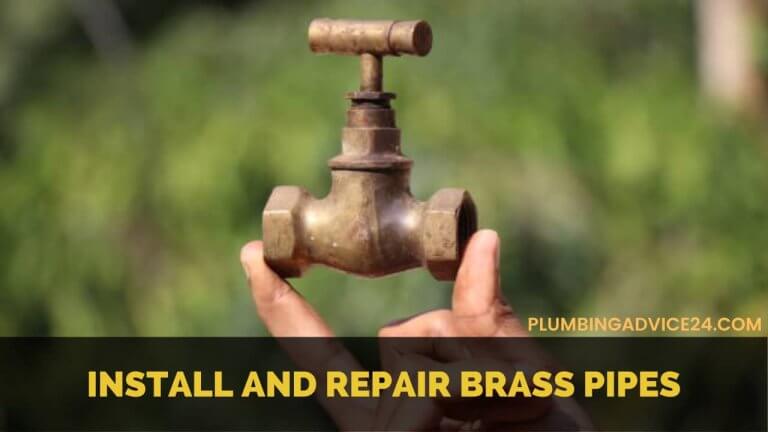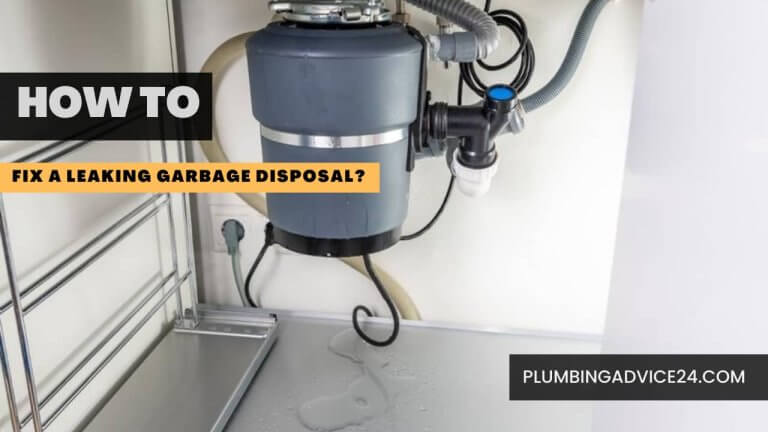Surface Drainage Installation And Design
Surface drainage is best for homes located on flat surfaces where insufficient slopes exist to carry water away. It is installed with the drain opening flush or below ground level. These channels rely on the slope of the surface to encourage water into the basin.
What Is Surface Drainage System?
A surface drainage system collects and removes large volumes of water quickly. It is essential to catch excess rainwater runoff and remove it before it collects and causes serious damage. For this reason, the soil is often installed on sloping surfaces such as showers and driveways.
If the area around your home has drainage problems (such as water pooling within four feet of the foundation after rain), a surface drain can prevent it from stressing the structure.
Surface drainage may be a primary requirement in areas where water collects above the ground surface and forms puddles. These drainage systems are mainly used for the following applications:
- Collecting and disposing of large volumes of water from the ground quickly.
- Preventing water flowing down from upper slopes to lower-lying land.
- Preventing run-off water from other sources, such as roadside drains, neighboring properties, and dam overflows.
- Acting as a collector system to carry water from the ground to subsurface drainage systems.
Surface Drain Installation
Before installing a surface drainage system, you should conduct a topographic survey and develop a contour map of the area using grid survey, laser techniques, photogrammetric methods, or some combination of these.
Keep copies of contour maps, built plans, and profiles as a permanent record of improvements. These resources will be invaluable later when ditches have to be reshaped or channels re-graded. The following two points should be considered while installing a surface drainage system.
1. Grading:
Land grading (also called precision land preparation) is the shifting of the land surface to a planned grade with tractors and scrapers. Its purpose is to provide excellent surface drainage, although the amount of grading will depend on the soil and cost.
To do a good job of land grading, you need a detailed engineering survey and construction layout.
2. Smoothing:
Land smoothing removes irregularities on the land surface and should be done after land grading, which can be useful in other situations. Special equipment such as a land plane or land leveler should be used for smoothing.
The purpose of land smoothing is to improve surface drainage. Smoothing operations can usually be directed without detailed surveys or plans in the field, although grid surveys may be required for some important parts of the field.
Related Post : Types of Drainage Systems for Residential
Design of Surface Drainage System
Before installing a surface drainage system, it is important to determine that the design you have chosen for it is appropriate. A well-designed surface drainage system will ensure that the period of ponding water is never long enough to cause any damage to a particular landscape.
A free-flowing surface drainage system can enable the free flow of water to prevent flooding of a specific area. Apart from that, such systems will help reduce the health effects associated with mosquito-borne water collection.
Here we provide information about some design types of surface drainage systems, the knowledge of which will be beneficial for you.
- Random drain system
- Bedding drain system
- Cross-slope ditch system
- Parallel field drain system
- Parallel open ditch system
- Surface drain inlet
- Drain Pipe outlet
Random Drain System
Random drains are best suited for drainage of scattered depressions or pits where the depth of cut does not exceed 1 m. Ditches constructed for drainage should have sufficient capacity to remove water quickly and completely.
Bedding Drain System
The area between two adjacent dead furrows is known as a bed. Where pipe drainage is not economical, and the soil may penetrate slowly, the Bedding Drain System is advantageous. This type of design is most practical on flat slopes of less than 1.5%.
Cross Slope Ditch System
Cross slope or interception ditch system is suitable for soils with poor internal drainage, numerous depressions to collect rainwater, and soil slopes are great for beds. Ditches created on slopes resemble terracing, which is why they are sometimes referred to as drainage-type terraces.
Parallel Field Drain System
Parallel field drains are similar in bed except that the channels are spaced further apart (100-30 m) and have a capacity greater than dead furrows. It is the most effective surface drainage design and is well-suited for irrigated and rainfed areas.
Parallel Open Ditch System
The parallel open ditch system is similar to the parallel field drain system, but the pits are deeper in this design. This system design works in soils where surface and subsurface drainage are required. The minimum size for open ditches is 0.3 m deep, and side slopes are steeper than 6:1.
Surface Drain Inlet
A surface drain inlet is a design that directs pit water to a subsurface drain. A mesh screen is provided over the drain to check the entry of debris into the drain.
Drain Pipe Outlet
A drain pipe outlet is designed when it is difficult for you to shape the ground to divert the drain water into the drainage channel; then, the pipe can be used.
Related Post : Different Types of Surface Drainage Systems
Advantages of Surface Drainage
1. Cost
Surface drainage systems are easier and less expensive to set up. Installation is also less labor intensive; you can even make channels and ditches yourself if you have the right tools.
2. Maintenance
Surface drains are more easily accessible than pipes; these drains are easier to maintain. Inspection and cleaning operations are easy as these drains are not buried.
Disadvantages of Surface Drainage
1. Expensive
Surface drainage installation often costs a lot if you hire a professional. You may also need a permit to install these drainage systems, especially if your particular project requires multiple channels and deep excavations.
2. Contaminated
Surface drainage systems can contribute to contamination problems if they are not properly maintained.
Surface Drainage Solutions
After installing the surface drainage system, it is necessary to maintain it. Since the surface drainage system is open, there is a high chance of debris entering it, which can block the drain. A blocked surface drainage system can cause flooding and damage your property. Additionally, stagnant water can cause mosquitoes and other health problems.
Therefore side ditches and field ditches of the surface drain need to be cleaned as required for proper functioning. Small sediment deposits often greatly reduce the capacity of the surface drainage system and cause its partial or complete failure.
Whenever heavy rainfall occurs, the outlet channel and ditches of the surface drainage system should be inspected, and silt deposits or other obstructions should be removed. Brush-type vegetation, such as cattails, willows, and cottonwoods, is prone to surface pitting and should be trimmed or pruned once or twice per year as needed. It can also cause your surface drainage system to become blocked.
Maintenance of graded areas for two years after the construction of the surface drainage system is important. You may have to fill some areas to give this drainage system a proper slope. Often this filling can erode, so it may need to be refilled. Tractors and scrapers can be used to remove depressions and reverse the surface grade.
Related Post : What Is a Sewer Line | Types of Sewer Pipes | Best Sewer Line Insurance Company
What Is Surface Drain?
A surface drain collects and removes large volumes of water quickly. It is essential to catch excess rainwater runoff and remove it before it collects and causes serious damage. For this reason, the soil is often installed on sloping surfaces such as showers and driveways.
How to Drain Ground Water?
The best way to drain water from the ground is to install a surface drain. A surface drain drains water from the surface into streams or rivers, protecting your property from water damage.
How to Install a Surface Drain?
Before installing a surface drain, you should conduct a topographic survey and develop a contour map of the area using grid surveying, laser techniques, photogrammetric methods, or some combination of these. Land grading and land smoothing need to be more precise while installing surface drainage systems.
Surface Drain Design
Before installing a surface drain, it is important to determine that the design you have chosen for it is appropriate. A well-designed surface drain will ensure that the period of ponding water is never long enough to cause any damage to a particular landscape.
Consider the following design for a surface drain:
- Random drain system
- Bedding drain system
- Cross slope/interception ditch system
- Parallel field drain system
- Parallel open ditch system
- Surface inlet
- Pipe outlet
What Are the Disadvantages of Surface Drainage?
Since the surface drainage system is open, there is a high chance of debris entering it, which can block the drain. A blocked surface drain can cause flooding and damage your property. Additionally, stagnant water can cause mosquitoes and other health problems.
If You Liked This Post? So Share It with Your Friends
Suggested Articles:
